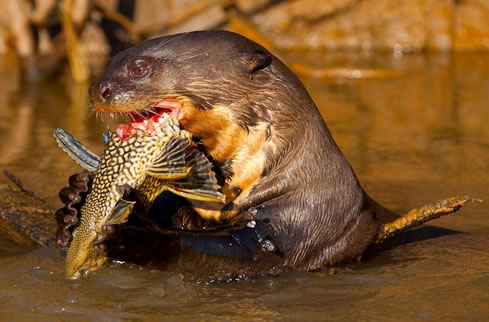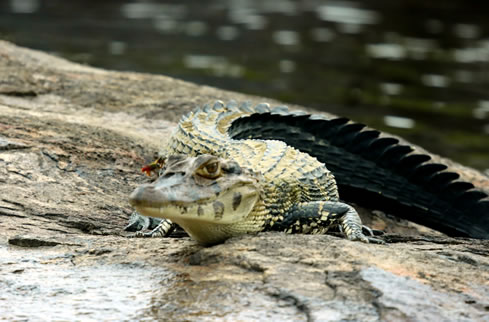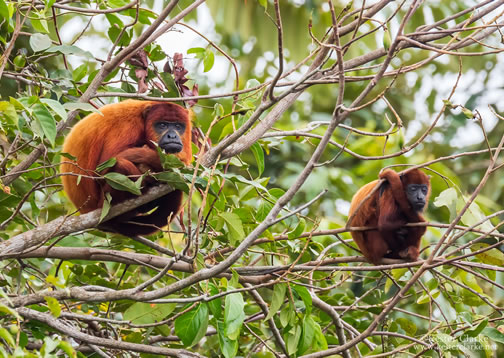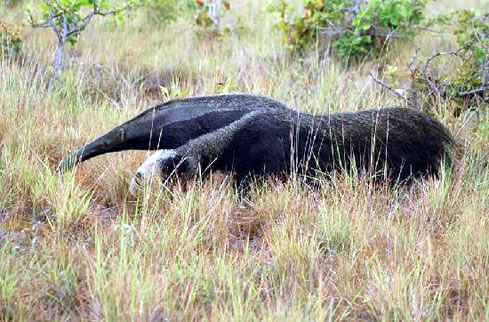North Rupununi Highlights
$2395 per person
North Rupununi Highlights takes you into the Rupununi Savannahs in search of some of Guyana’s Giants, most notably, the Giant Otters, Giant Anteaters and Black Caimans. Experience the warmth hospitality of Karanambu and Caiman House family and the Guyana/Brazil Frontier Township of Lethem.
Terms and conditions of payments: 50% as deposit on reservation, 50% due 30 days before arrival in Georgetown.
Download and print -:- North Rupununi Highlights Itinerary.
Minimum Group Size -:- 2 Persons.
Included:
-
- Arrival and departure transfers
- Domestic flights
- All accommodation
- All tours and entrance fees
- Land and river transport
- All food and beverages, where so indicated by BLD.
Excluded:
-
- Any tips, personal porters, personal items etc.
- Each person will be allowed a maximum of 9 Kg (20 lbs) weight as check in luggage, plus a small hand piece not exceeding 2 kg (5 lbs) to take on the Aircraft. Excess luggage can be left with our personnel for safe keeping in Georgetown
- Whilst every effort would be made to assist, entry requirements (Visitors Visas, Vaccinations etc) are the sole responsibility of Clients.
Day 1: Arrival Guyana
Arrival Guyana & Transfer to Hotel: Overnight Sleepinn or Equivalent.
Day 2: (Saturday, Sunday, Tuesday or Thursday -Historic Georgetown & Kaieteur Falls)-
Morning 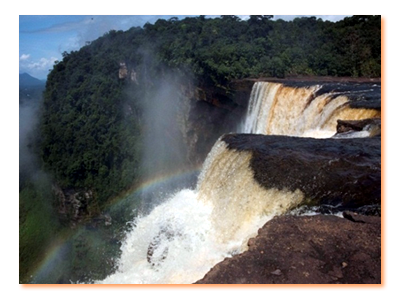 City Tour of Georgetown (Between 09.00 hrs and 11.00 hrs); Return to Hotel. At 11.45 hrs transfer to EF Correia International Airport, Ogle for flight at 13.00 hrs to Kaieteur Falls (World’s Largest Single Drop Water Falls) Kaieteur is nearly five times the height of Niagara Falls. Here we can also find White-chinned and White-tipped Swifts swirling over the gorge, and the astonishingly colorful Guianan Cock-of-the-Rock; Return to Ogle Airport by aircraft at 17.15 hrs and transfer to Georgetown; Overnight Sleepin International or Equivalent.
City Tour of Georgetown (Between 09.00 hrs and 11.00 hrs); Return to Hotel. At 11.45 hrs transfer to EF Correia International Airport, Ogle for flight at 13.00 hrs to Kaieteur Falls (World’s Largest Single Drop Water Falls) Kaieteur is nearly five times the height of Niagara Falls. Here we can also find White-chinned and White-tipped Swifts swirling over the gorge, and the astonishingly colorful Guianan Cock-of-the-Rock; Return to Ogle Airport by aircraft at 17.15 hrs and transfer to Georgetown; Overnight Sleepin International or Equivalent.
Day 3: Georgetown to Lethem and Caiman House
After breakfast transfer to EF Correia International Airport, Ogle Airport for flight at 09.00 hrs onto the foothills of the Kanuku Mountains, to the  Township of Lethem, located in the Upper Takutu-Upper Essequibo Region of Guyana. Lethem is considered the capital of Region 9 and is a hub linking many of the surrounding Indigenous Villages with Georgetown and Boa Vista, the nearest town in Brazil. The recently commissioned Takutu River Bridge links the two countries and offers greater opportunities for trade and commerce. The town is approximately 280 feet above sea level and has a mixed population of approximately 3,500, with a heavy influence of Brazilian Culture. It is named after Sir Gordon James Lethem, who was the Governor of British Guiana from 1941 to 12 April 1947, in the Rupununi Savannahs. Continue by vehicle to thru the Rupununi Savannahs to Yupukari, located on the Rupununi River. Caiman House is the hub of several participatory development projects, including the introduction of classroom libraries in all three village schools and an internet-enabled public library. Visitors may have the opportunity to meet local craftspeople, including the furniture builders at Yupukari Crafters, a non-profit venture to create village jobs and generate income to sustain educational development. Tonight enjoy a foray on the Rupununi River from Caiman House Field Station. As a guest you have the unique opportunity to support and participate in an ongoing field study of the Black Caiman (melanosuchus niger), the largest member of the alligator family and an endangered species. Guests will observe the capture from a separate boat, but will be offered the opportunity to assist in data collection. Caiman are weighed, measured, sexed and tagged before being released back into the river. The research has already discovered interesting information on caimans’ nests that was previously unknown. During periods of high water it is difficult to capture Caiman so you will have another chance to enter the nocturnal world of the Rupununi River and associated gallery forests which offer an experience, and world of wildlife entirely different than those viewed on a day trip. Skilled guides will expertly escort visitors to meet elusive denizens of darkness by
Township of Lethem, located in the Upper Takutu-Upper Essequibo Region of Guyana. Lethem is considered the capital of Region 9 and is a hub linking many of the surrounding Indigenous Villages with Georgetown and Boa Vista, the nearest town in Brazil. The recently commissioned Takutu River Bridge links the two countries and offers greater opportunities for trade and commerce. The town is approximately 280 feet above sea level and has a mixed population of approximately 3,500, with a heavy influence of Brazilian Culture. It is named after Sir Gordon James Lethem, who was the Governor of British Guiana from 1941 to 12 April 1947, in the Rupununi Savannahs. Continue by vehicle to thru the Rupununi Savannahs to Yupukari, located on the Rupununi River. Caiman House is the hub of several participatory development projects, including the introduction of classroom libraries in all three village schools and an internet-enabled public library. Visitors may have the opportunity to meet local craftspeople, including the furniture builders at Yupukari Crafters, a non-profit venture to create village jobs and generate income to sustain educational development. Tonight enjoy a foray on the Rupununi River from Caiman House Field Station. As a guest you have the unique opportunity to support and participate in an ongoing field study of the Black Caiman (melanosuchus niger), the largest member of the alligator family and an endangered species. Guests will observe the capture from a separate boat, but will be offered the opportunity to assist in data collection. Caiman are weighed, measured, sexed and tagged before being released back into the river. The research has already discovered interesting information on caimans’ nests that was previously unknown. During periods of high water it is difficult to capture Caiman so you will have another chance to enter the nocturnal world of the Rupununi River and associated gallery forests which offer an experience, and world of wildlife entirely different than those viewed on a day trip. Skilled guides will expertly escort visitors to meet elusive denizens of darkness by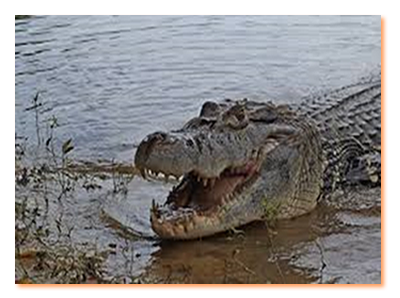 outboard powered boats, while interpreting the sights, and sounds of Guyana after dark. Just after darkness settles on the River many creatures emerge such as black caiman (to over 12 feet), spectacled caiman, tree boas, iguanas, frogs, and many fish species( i.e arrawana, piranha). Sleeping birds (kingfishers, small perching birds) nightjars, potoos, Boat-billed Herons and other aquatic birds, bats, (harmless) spiders, insects, moths, and more can be closely approached in way not possible during the hours of light. Less likely, but not rare inclusions for night viewing include possums, tree dwelling rodents, capybara and sleeping monkeys (esp. squirrel monkeys) amongst other mammals. Few nights pass without some unusual offering. Overnight at Caiman House (BLD).
outboard powered boats, while interpreting the sights, and sounds of Guyana after dark. Just after darkness settles on the River many creatures emerge such as black caiman (to over 12 feet), spectacled caiman, tree boas, iguanas, frogs, and many fish species( i.e arrawana, piranha). Sleeping birds (kingfishers, small perching birds) nightjars, potoos, Boat-billed Herons and other aquatic birds, bats, (harmless) spiders, insects, moths, and more can be closely approached in way not possible during the hours of light. Less likely, but not rare inclusions for night viewing include possums, tree dwelling rodents, capybara and sleeping monkeys (esp. squirrel monkeys) amongst other mammals. Few nights pass without some unusual offering. Overnight at Caiman House (BLD).
Day 4: Karanambu Lodge
After breakfast, take a boat ride along the Rupununi River. Depending on the river level, this trip offers an excellent  opportunity to look for Giant Otters as there are several family groups which live along this stretch of the Rupununi River and also great for birding, to Karanambu, home of the late Diane Mc Turk. Diane is famous for rehabilitating orphan otters to the wild. She has appeared in many films and television programs, such as National Geographic, Jeff Corwin Experience, Really Wild Show (BBC) and the Calgary’s “Zoo World”. Karanumbu Ranch is located within the rainforest and savannah.
Typically there are two guided excursions each day — one early in the morning and another late in the afternoon and into the evening. As well as being the coolest times to be out, these are usually the best times to see the different birds and animals. Trips may be on the river by boat, on the savannahs by Land Rover or along forest trails on foot to the different ponds in the area. Activities usually include. This evening we would do a river tour of the Rupununi, searching for wild otters along the river and among the ponds. Many species of birds can be observed along nearby rivers and oxbow lakes, such as Capuchinbirds, Striped Woodcreeper, Pale-bellied Tyrant-Manakin, Slate-headed Tody-Flycatcher, Bearded
opportunity to look for Giant Otters as there are several family groups which live along this stretch of the Rupununi River and also great for birding, to Karanambu, home of the late Diane Mc Turk. Diane is famous for rehabilitating orphan otters to the wild. She has appeared in many films and television programs, such as National Geographic, Jeff Corwin Experience, Really Wild Show (BBC) and the Calgary’s “Zoo World”. Karanumbu Ranch is located within the rainforest and savannah.
Typically there are two guided excursions each day — one early in the morning and another late in the afternoon and into the evening. As well as being the coolest times to be out, these are usually the best times to see the different birds and animals. Trips may be on the river by boat, on the savannahs by Land Rover or along forest trails on foot to the different ponds in the area. Activities usually include. This evening we would do a river tour of the Rupununi, searching for wild otters along the river and among the ponds. Many species of birds can be observed along nearby rivers and oxbow lakes, such as Capuchinbirds, Striped Woodcreeper, Pale-bellied Tyrant-Manakin, Slate-headed Tody-Flycatcher, Bearded  Tachuri, Bicolored Wren, and White-tailed Goldenthroat. As we go along the rivers we can observe Jabiru, Rufescent Tiger-Heron, Ringed and Amazon Kingfishers, Purple Gallinule, Agami Heron, Wattled Jacanas walking on water lilies. In the late afternoon you’ll most likely see Lesser Razor-billed Curassow, Sunbittern, Black-chinned Antbird, and Boat-billed Heron. The highlight of the trip is to witness the opening/blooming of the Giant Amazonica Lily-Guyana’s National Flower. Overnight Karanambu Lodge (BLD).
Tachuri, Bicolored Wren, and White-tailed Goldenthroat. As we go along the rivers we can observe Jabiru, Rufescent Tiger-Heron, Ringed and Amazon Kingfishers, Purple Gallinule, Agami Heron, Wattled Jacanas walking on water lilies. In the late afternoon you’ll most likely see Lesser Razor-billed Curassow, Sunbittern, Black-chinned Antbird, and Boat-billed Heron. The highlight of the trip is to witness the opening/blooming of the Giant Amazonica Lily-Guyana’s National Flower. Overnight Karanambu Lodge (BLD).
Day 5: Karanambu – Lethem -Georgetown
This morning you will make an early start to reach an area of rolling grasslands, which is home to a population of giant anteaters. With luck you will locate one of these six-foot long animals excavating its breakfast from one of the red termite mounds that stud the savannah. The giant anteater, also known as the ant bear, is a large insectivorous mammal native to Central and South America. It is recognizable by its elongated snout, bushy tail, long foreclaws and distinctively colored pelage. It feeds primarily on ants and termites, using its fore claws to dig them up and its long, sticky tongue to collect them. If you are interested in bird watching you can explore woodland patches or gallery forest along the river where we’ll hope to find such species as Spotted Puffbird, Striped Woodcreeper, Pale-bellied Tyrant-Manakin, Golden-spangled Piculet, Bearded Tachuri and Capuchinbird. A feature bird for the area is Agami Heron. After lunch return by vehicle to Lethem for your flight at 16.00 hrs to EF Correia Airport, where you will be picked up and transfer to Georgetown: Overnight Sleepinn International Hotel (BL).
Day 6: Transfer to Airport for Onward Travels
-
-
- Broad rim or peaked sun hat.
- Lightweight, quick dry, light colored long pants and shirts
- Lightweight socks that dry quickly.
- Shorts, bathing suit, T-shirts (ideally light color cotton)
- Slippers or sandals
- Appropriate boots
- Sunscreen and chap stick
- Insect repellent
- Medications for specific personal conditions (for allergic reactions, heart conditions, digestive disturbances, malaria prevention etc.)
- Calamine lotion or sunburn cream
- Sunglasses (ideally with carrying straps)
- Small personal first aid kit (aspirins, small bandages, rubbing alcohol,antibiotic cream, diarrhea medication, gauze pads and rolls of tape insect cream
- Plastic water bottle
- Backpack
- Personal toiletries (toothbrush, paste, soap, small towel, etc.)
- Small flashlight and extra batteries
- Camera, lenses, films, memory card
- Copy Biographic page of Passport
- Requisite Visas (Check with Respective Embassies).
- Yellow Fever Vaccination Card
-





